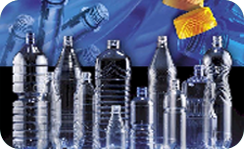
Services for the
Plastic Container
Industry
Plastic Container
Industry
Latest News
Follow this link to read about relevant industry developments
Services
 The experts at Apex Container Tech Inc. are here to assist you in your current business or with starting a new one
The experts at Apex Container Tech Inc. are here to assist you in your current business or with starting a new one
Follow this link to read about relevant industry developments
Services
 The experts at Apex Container Tech Inc. are here to assist you in your current business or with starting a new one
The experts at Apex Container Tech Inc. are here to assist you in your current business or with starting a new one

Blow Molding Package Development
Comprehensive services to develop your package in any blow molding technology

Blow Molding: Reheat
Stretch blow molding is one of the areas our expertise covers. Examine our offerings

Blow Molding: Extrusion
Our expert advice in this area has helped many companies improve their bottom line

Blow Molding: Injection Stretch
Injection stretch blow molding is a complicated process that often requires our expert advice





